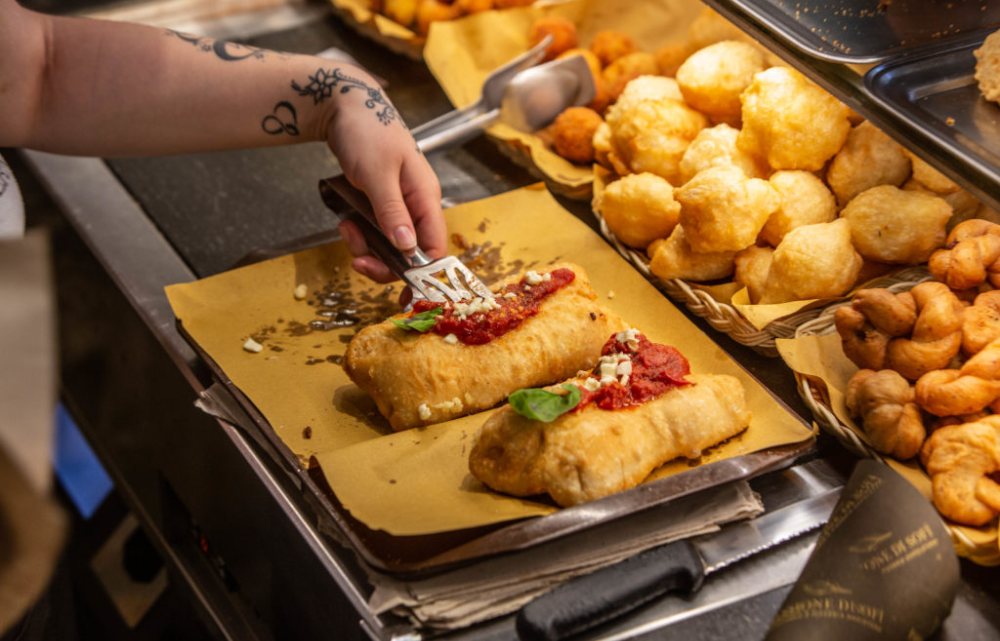
Discovering Culinary Delights Across Europe | Eat in Europe
Traveling through picturesque landscapes, charming towns, and vibrant cities offers more than just stunning views; it opens a door to a world filled with rich flavors and diverse traditions. Each corner of this continent reveals a unique palette, crafted by centuries of history, cultural exchanges, and local ingredients. Gastronomic wonders await those eager to indulge in dishes that tell stories of heritage and innovation.
From bustling markets to intimate family-run eateries, culinary adventures provide an opportunity to savor authentic recipes passed down through generations. Engaging with skilled artisans and local chefs allows for a deeper understanding of what makes each region’s fare distinct. Every bite becomes a celebration of the land’s bounty, inviting all to immerse themselves fully in a delightful exploration of food.
As one embarks on a flavorful journey, uncover hidden gems and iconic staples that define various locales. Whether it’s a warm bowl of comforting stew or an exquisite dessert crafted with precision, every meal is an invitation to connect with culture and community. Review menus, explore street vendors, and embrace opportunities to sample local brews, showcasing how much passion and creativity thrive in kitchens across this vibrant continent.
Explore Iconic European Food Markets
Vibrant marketplaces showcase an array of flavors, aromas, and textures, creating a feast for senses. Each destination offers a unique blend of local ingredients, artisanal products, and traditional dishes, drawing food enthusiasts from around the globe. Visiting these markets provides an opportunity to connect with local cultures and savor authentic delights.
Top Markets to Visit
-
Mercato di Testaccio – Rome, Italy
-
Borough Market – London, England
-
La Boqueria – Barcelona, Spain
-
Markthalle Neun – Berlin, Germany
-
Porto’s Mercado do Bolhão – Porto, Portugal
What to Look For
-
Fresh produce and seasonal specialties
-
Local cheeses, cured meats, and seafood
-
Handcrafted pastries and baked goods
-
Street food offerings representing regional cuisine
-
Unique spices, condiments, and gourmet treats
Each visit to these lively venues invites culinary exploration, encouraging every traveler to indulge in unique tastes and traditions that reflect heart and soul of local communities.
Regions Famous for Unique Cuisines
Every locality holds a treasure trove of flavors and traditions, shaped by history, geography, and culture. These distinctive gastronomies invite exploration and appreciation, capturing the essence of their origins and showcasing local ingredients and techniques. Each region boasts a rich tapestry of tastes that make the journey through their culinary landscapes a delight for the senses.
Italy: A Symphony of Flavors
Italy is renowned for its vibrant dishes that vary dramatically from one region to another. In the north, creamy risottos and rich polentas dominate, while the south offers spicy sauces and fresh seafood. Local specialties such as Neapolitan pizza or Tuscan ribollita reflect the agricultural bounty of the land, celebrating traditions passed down through generations.
Spain: A Gastronomic Mosaic
Spanish cuisine is a captivating blend of influences, reflecting its diverse landscapes and cultures. From the savory tapas of Andalusia to the hearty paella of Valencia, each dish tells a story of its region. The use of fresh ingredients, bold flavors, and communal dining brings people together, creating an atmosphere of festivity and connection.
Must-Try Traditional Dishes in Europe
Exploring regional cuisines offers a delightful glimpse into the culture and heritage of various nations. Each country boasts unique flavors and cooking methods that reflect its history and traditions. Here, we highlight some iconic dishes that should not be overlooked when savoring the local fare.
Hearty Classics
In many parts of the continent, you’ll find comforting meals that have stood the test of time. For instance, Italy is renowned for its Risotto, a creamy rice dish cooked slowly with broth to achieve its signature texture. Meanwhile, Germany delights diners with its savory Sauerbraten, a pot roast traditionally marinated in vinegar and spices, resulting in a tender and flavorful main course.
Regional Specialties
Some nations take pride in unique offerings that tell a story of place and people. France is famous for its Coq au Vin, a rich dish featuring chicken braised with wine, lardons, mushrooms, and onions, creating a symphony of taste. In Spain, indulge in Paella, a vibrant rice dish loaded with seafood or meats and infused with saffron, encapsulating the essence of Mediterranean cooking.
Discover Local Food Festivals and Events
Participating in regional celebrations centered around delectable fare offers a unique opportunity to immerse oneself in vibrant cultures and traditions. These gatherings present a delightful showcase of authentic flavors, cooking techniques, and local ingredients, allowing attendees to experience the rich culinary heritage of various destinations.
Whether you are a passionate foodie or simply curious about local customs, these occasions bring communities together and highlight their gastronomic pride. From bustling markets to exquisite tastings, food festivals often feature workshops, competitions, and demonstrations that can enhance one’s appreciation for diverse cuisines.
|
Festival Name |
Location |
Date |
Highlights |
|---|---|---|---|
|
Olive Oil Festival |
Tuscany, Italy |
November |
Tastings, workshops on oil production |
|
Cheese Rolling Festival |
Gloucestershire, UK |
Spring |
Cheese rolling race, local cheese vendors |
|
La Tomatina |
Bunol, Spain |
Last Wednesday of August |
Tomato fight, live music, food stalls |
|
Oktoberfest |
Munich, Germany |
September to October |
Beer tastings, traditional German dishes |
Every festival has its own charm and distinct offerings, ensuring that visitors leave with unforgettable memories and a deeper connection to the local community. Exploring these events can be an enriching adventure, inspiring a deeper appreciation for food and tradition in various regions.
Best Culinary Tours for Food Lovers
For those passionate about gastronomy, embarking on a journey that showcases local flavors can be a transformative adventure. Food walks, market visits, and hands-on cooking lessons offer an opportunity to immerse oneself in vibrant culinary scenes, allowing travelers to savor authentic dishes while learning about the cultural significance behind each ingredient.
Gastronomic Journeys: A Taste of Tradition
Participating in organized excursions can provide insights into time-honored recipes and techniques passed down through generations. In popular destinations, skilled guides lead groups through bustling markets, where participants can engage with local vendors and sample fresh produce. These excursions often culminate in delightful cooking sessions, where individuals create dishes under the guidance of seasoned chefs.
Quaint Neighborhood Tastings: Flavors Off the Beaten Path
Smaller, intimate tours offer a chance to explore hidden gems in less-known neighborhoods. Through these well-curated routes, food enthusiasts can indulge in home-cooked meals, savoring dishes that reflect regional influences. Such experiences allow for genuine connections with locals while indulging in delightful flavors that tell a story of their own.
Cultural Influences on European Gastronomy
The intricate tapestry of flavors and techniques in culinary traditions across the continent reflects a rich history of migration, trade, and exchange. Each region showcases unique ingredients and preparation methods shaped by diverse cultural interactions over centuries. This vibrant mosaic creates a distinctive identity for various cuisines, resulting in a continually evolving gastronomic landscape.
Historical Context and Migration
Throughout history, movements of people have brought new elements to local dishes. Invaders, traders, and immigrants contributed to the culinary diversity seen today. For instance, the spice trade introduced exotic flavors to European kitchens, transforming traditional meals into something extraordinary. The blending of different cultural practices and preferences has given rise to unique fusion cuisines that reflect the dynamic nature of society.
Regional Ingredients and Traditions
Local produce often dictates cooking styles and recipes, with each area offering distinct specialties shaped by climate and geography. Herbs, cheeses, and meats from specific regions highlight local agricultural practices and seasonal availability. Furthermore, traditional methods passed down through generations ensure that the essence of regional gastronomy is preserved while still allowing for innovation.
As cultures converge and evolve, factors such as travel, globalization, and social media also play pivotal roles in shaping contemporary food trends. Enthusiasts can now explore a fusion of flavors from different backgrounds, reinforcing the notion that culinary arts are not just about sustenance, but also a profound expression of cultural identity.
Questions and answers: Eating in Europe
What are some must-try dishes when visiting Italy?
Italy is renowned for its rich culinary heritage. If you’re visiting, make sure to try classic dishes like Risotto alla Milanese from Milan, which features creamy rice cooked with saffron. In Naples, you can’t miss authentic Neapolitan pizza, made with simple yet high-quality ingredients. In Tuscany, savor the flavors of a traditional Bistecca alla Fiorentina, a large T-bone steak grilled over a wood fire. Don’t forget to indulge in delightful desserts like Tiramisu and gelato, which are favorites throughout the country!
How can I find top-rated restaurants in European cities?
Finding top-rated restaurants in European cities can be an exciting journey! Start by checking online platforms like TripAdvisor or Yelp for user reviews and ratings. Social media, particularly Instagram, is also a great resource for discovering trending eateries. Local food blogs often provide insights into hidden gems not listed in mainstream guides. Additionally, consider asking locals for recommendations; they often know the best spots that showcase authentic cuisine.
What are some unique food experiences I can partake in while traveling through Europe?
Europe offers a plethora of unique culinary experiences! In Spain, you could join a tapas cooking class where you will learn to prepare small plates to share. In France, a wine and cheese tasting tour can deepen your appreciation for these iconic flavors. In Scandinavian countries like Sweden and Denmark, try foraging for wild ingredients with a local chef. You might also consider joining a food market tour in places like London or Barcelona, where you can taste local delicacies while exploring vibrant markets.
Is it worth trying street food in European cities, or should I stick to fine dining?
Absolutely, trying street food in European cities can be just as rewarding as dining in fine establishments! Street food often reflects the local culture and offers authentic flavors at a fraction of the price. In cities like Berlin, don’t miss out on Currywurst, while in Budapest, traditional chimney cakes (kürtőskalács) are a must-try. Street vendors frequently use fresh, local ingredients, making it a delicious and convenient option. Balancing both street food and fine dining will give you a well-rounded culinary experience.
How can I experience traditional dining customs in different European countries?
Experiencing traditional dining customs in Europe can enhance your culinary journey. In Italy, for example, you can enjoy a leisurely multi-course meal and learn about the importance of each course. In Greece, dining often entails sharing multiple dishes among friends and family, reflecting their culture of hospitality. You can immerse yourself in customs by participating in family dinners or traditional feasts during local festivals. Moreover, look for restaurants that emphasize traditional recipes and cooking methods, as they often incorporate authentic customs into the dining experience.
What are some of the must-try dishes when traveling through Europe?
When traveling through Europe, there are countless must-try dishes that reflect the rich culinary traditions of each country. In Italy, savoring a classic Neapolitan pizza or a bowl of fresh pasta is essential. France offers iconic dishes like coq au vin and ratatouille, while in Spain, tapas such as patatas bravas and jamón ibérico are a must. Don’t miss out on sampling traditional German sausages and pretzels, or indulgent Belgian waffles and chocolates. Each region has its unique flavors and preparations, making the experience of dining in Europe a diverse and exciting culinary adventure.
How can I find the best local eateries and food experiences while visiting Europe?
Finding the best local eateries and food experiences while visiting Europe can enhance your culinary journey significantly. Start by researching online through food blogs, travel websites, and social media platforms like Instagram for recommendations from locals and fellow travelers. Consider using apps like Yelp or TripAdvisor to read reviews and discover highly-rated restaurants. Joining food tours can also be an excellent way to experience authentic dishes while learning about the local culture from knowledgeable guides. Additionally, don’t hesitate to ask locals for their recommendations; they often know hidden gems that aren’t widely advertised. Exploring local markets can also lead you to delightful food stalls and casual dining options that showcase regional flavors.
What are some tips for eating well in Europe without breaking the bank?
Eating well on a budget in Europe is possible with a few simple strategies. Visiting local bakeries to enjoy fresh baguettes or croissants is a great way to have a cheap meal. Cafés often offer inexpensive lunch specials, and many European restaurants provide a reasonably priced meal of the day. Supermarkets are also an excellent resource for budget-friendly meals, where you can grab local ingredients and snacks. Additionally, eating at a farmers’ market or a pub where locals eat ensures good food without the touristy prices.
What are some typical things to eat for dinner in Europe?
Dinner in Europe varies by region, but you can always expect to find good food typical of the area. In France, you might try escargots as an appetizer, followed by a baguette and a bottle of wine with your meal. In Italy, red meat dishes are common, along with pasta and a variety of breads. In Eastern Europe, hearty stews and local meats are usually served. No matter where you are, European restaurants will offer dishes that highlight the region’s flavors, and locals often prefer simple, fresh ingredients.
What is the best way to find places to eat like a local in Europe?
To eat like a local in Europe, avoid touristy areas and instead ask your hotel or hostel for recommendations on cafés or restaurants that serve authentic local dishes. Farmers’ markets and small bakeries are perfect for getting a taste of the region’s food at a reasonable price. Cafés in European cities often offer great food, and pub meals are a good way to experience local flavors while also getting a budget meal. You can also check travel tips from guides like “Europe by Rick Steves” for recommendations on where locals eat.
What are the tipping customs in European restaurants?
Tipping in Europe differs from country to country. In some parts of Europe, like Italy and France, a service charge is usually included in the bill, so tipping isn’t necessary, but rounding up or leaving a small tip is appreciated for good service. In other European regions, tipping a few euros for a waiter or waitress after a meal is common. Always check the bill to see if service is included, and when in doubt, locals will usually tip in the range of 5-10%, depending on the level of service.
What are the best places to eat and drink in Europe for a tourist on a budget?
For a tourist on a budget, European cafés, bakeries, and pubs are ideal places to eat and drink without overspending. You can find hearty meals in local pubs, especially in countries like the UK and Ireland, where dishes like meat pies are often inexpensive. Bakeries in places like France and Italy offer fresh buns, croissants, and sandwiches at budget-friendly prices. Supermarkets are another excellent option to grab ready-to-eat items, and some of the best restaurants often have affordable lunch menus that are a fraction of their dinner prices.
What is the best way to eat the local cuisine during a trip to Europe?
The best way to eat the local cuisine during a trip to Europe is to explore places where locals dine. Avoid tourist-heavy spots and instead, look for small cafés, pubs, or restaurants that are typical of the region. Farmers’ markets are also great for fresh, regional food. If you’re traveling through cities like Paris or Istanbul, try tasting foods that are typical of the region, such as French food like escargots or a snail dish. You’ll often find the best experience in restaurants where locals eat, as the food is authentic and usually cheaper than in tourist areas.
How can you eat well without busting your budget when traveling through Europe?
Eating well without busting your budget in Europe is achievable by choosing local bakeries and street food vendors, especially for lunch and dinner. Many countries have affordable places for lunch that offer set menus or specials. Cafés in cities like Paris often provide excellent food at a lower price during lunchtime. Restaurants in Europe also tend to have more affordable meals at certain times of the day, and you can always take a seat at a pub or a small local eatery to enjoy good food without spending too much.
What should you never eat in Europe, and when is the best time of the day to dine?
When planning a trip to Europe, you should be mindful of local customs and preferences. While KFC and other fast food options are available, to have the best experience, it’s recommended to try the local cuisine, as it is often fresher and more flavorful. Avoid eating in restaurants near major tourist spots, as they are often overpriced and may not offer the best local food. Europeans typically dine later in the evening, so lunch and dinner are served later compared to other parts of the world. If you’re traveling through Europe, make sure to taste the local dishes and embrace the timing of meals to experience the culture fully.







